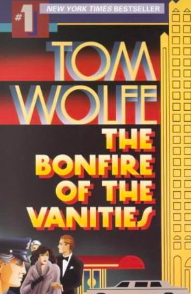
Hypothetical: If you had to choose a novel written by somebody else, that you wish you had written, what would it be?

by James Scott Bell
@jamesscottbell
On occasion a writer is tapped to make some remarks in a public setting. For some, this is as enticing as a root canal, or being forced to watch The Golden Bachelor. We’ve given out some good advice on public speaking here at TKZ (you can use the search box). Today, I’d like to talk about things you should never do when giving a speech.
To help me out, I call upon the great American humorist Robert Benchley. Benchley came to prominence with a stage performance called “The Treasurer’s Report.” It was a hilarious bit about a befuddled man trying to make a dull presentation somewhat entertaining. It was turned into a short film in 1928 and is one of the earliest “talkies” ushered in by The Jazz Singer.
Benchley gave a similar performance the 1943 movie The Sky’s the Limit, starring Fred Astaire. It gives us a compendium of speaking blunders we should attend to.
Take a look at this:
What did Mr. Benchley do wrong here?
Throat clearing (literally and figuratively). He announces that he has some remarks “by way of introduction.” Well, duh! That’s why he’s up there. You don’t need to tell your audience you are there to make some remarks. Just start remarking.
Which brings us to your opening words. So many speakers get introduced, then step up to the microphone and say something like, “Thank you, Jan, for that lovely introduction.” This is the equivalent of throat clearing. These words that go through the ears out right out of the heads of the audience. They are waiting for what you to say that they haven’t heard before.
Joke intro: “I’m reminded of a story, which probably most of you have heard…”
First of all, it’s very hard to tell a joke successfully in a speech. Some people are natural at it and can get away with it, but they never announce that they are about to tell a joke. That raises expectations and increases the chance of bombing.
If you’ve got a funny line that you have tested before others, go ahead and toss it in, without any additions.
Don’t laugh at your own stories or offhand remarks. Let the audience do all the reacting.
Don’t look above the audience. Make eye contact. I usually find a few friendly faces on either side of a room to return to.
Don’t intro your slides. You’ve got slides? That’s good. When they to on, guess what? The audiences sees them. That’s the wonder of it. In any event, you don’t have to say you have prepared some slides. Make them appear, then say what you need to say about them. Which assumes, of course, you know everything on them, unlike Mr. Benchley:
And now the ending:
First, don’t drink water during your talk (unless necessary for survival).
Second, stick your landing. Know your ending. It’s that last note you leave with your audience. Don’t befuddle it.
Third, always leave sooner rather than later.
On occasion, Mark Twain would attend the services of Dr. Doane, later Bishop of Albany, but then the Rector of an Episcopal church in Hartford. The good doctor was not known for his brevity. His sermons tended to go on…and on. Twain, one of the world’s great speakers, wondered how to offer some advice to the minister. One Sunday he took his chance.
“A fine sermon this morning,” Twain said. “You know, I have a book at home containing every word of it.”
“You have not!” Dr. Doane said.
“I do indeed.”
“Well, you send that book to me. I’d like to see it.”
“I will,” Twain said. The following day he sent Dr. Doane an unabridged dictionary.
These are some big “don’ts” of public speaking. Any others you’d like to add?
by James Scott Bell
@jamesscottbell
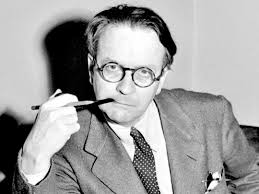 He was 44 years old, an alcoholic, and had just been fired from his job because of his drinking. The Depression was in full tilt. Married, with savings running low, he had to find a way to make a living.
He was 44 years old, an alcoholic, and had just been fired from his job because of his drinking. The Depression was in full tilt. Married, with savings running low, he had to find a way to make a living.
So he decided to become a writer. Ack!
Because of his background in business (he’d been an oil company executive for thirteen years), Raymond Chandler approached his new vocation systematically.
He started with an adult education course called Short Story Writing. He read pulp magazines, especially the famous Black Mask, with an analytical eye on what the writers did in their stories. He would make a detailed synopsis of a story by, say, Erle Stanley Gardner, then rewrite it in his own way, compare it with the original, then rewrite it again. That’s not a bad method for learning the craft.
What he didn’t see a lot of was style, a certain “magic” in the prose. (This reminds me of John D. MacDonald’s goal of “unobtrusive poetry.”)
Thus he began to type on strips of paper half the normal size. This forced him to put down choice words, and if he felt they didn’t work he could toss out the 15 lines or so and start again.
He kept notebooks, jotting down potential titles, story ideas, characters, and his observations of people, especially the clothes they wore and the slang they used.
His writing routine was based on time, not output (he was admittedly slow on the production side). He sat at his typewriter for four hours in the morning, until lunch. If the words didn’t come, he didn’t force the matter. If a writer doesn’t feel like writing, Chandler said, “he shouldn’t try.” (I have to disagree with the master here. But who am I to cavil? In 1939 he published The Big Sleep, got a bunch of Hollywood money, and became famous over time.)
He wrote to please himself and the reader. He once said in a letter, “I have never had any great respect for the ability of editors, publishers, play and picture producers to guess what the public will like. The record is all against them. I have always tried to put myself in the shoes of the ultimate consumer, the reader, and ignore the middleman.”
Of the two writers he was most associated with, he had this to say: “Hammett is all right. I give him everything. There were a lot of things he could not do, but what he did he did superbly. But James Cain—faugh! Everything he touches smells like a billygoat.”
And get this, from a 1947 letter: “I wrote you once in a mood of rough sarcasm that the techniques of fiction had become so highly standardized that one of these days a machine would write novels.”
Ha! (He also said technique alone could never have the “emotional quality” needed for memorable fiction. Looking at you, AI.)
For Chandler, the priority order of fiction factors seems to have been: style, characters, dialogue, scenes, plot. He was not a plotter. Far from it. In a 1951 letter to his agent, Carl Brandt, he wrote: “I am having a hard time finishing the book. Have enough paper written to make it complete, but must do all over again. I just didn’t know where I was going and when I got there I saw that I had come to the wrong place. That’s the hell of being the kind of writer who cannot plan anything, but has to make it up as he goes along and then try to make sense out of it. If you gave me the best plot in the world all worked out I could not write it. It would be dead for me.”
There are definitely plot holes in Chandler, the most (in)famous being who killed the chauffeur in The Big Sleep? When Warner Bros. was doing the movie, they sent a wire to Chandler asking who the murderer was. Chandler replied, “I don’t know.”
But here’s the thing. We remember Chandler, and place him atop the pantheon of hardboiled writers, because of what he emphaszied—his style. I mean, look at some of these gems:
There was a desert wind blowing that night. It was one of those hot dry Santa Ana’s that come down through the mountain passes and curl your hair and make your nerves jump and your skin itch. On nights like that every booze party ends in a fight. Meek little wives feel the edge of the carving knife and study their husbands’ necks. – “Red Wind”
Bunker Hill is old town, lost town, shabby town, crook town. Once, very long ago, it was the choice residential district of the city, and there are still standing a few of the jigsaw Gothic mansions with wide porches and walls covered with round-end shingles and full corner bay windows with spindle turrets. They are all rooming houses now, their parquetry floors are scratched and worn through the once glossy finish, and the wide sweeping staircases are dark with time and cheap varnish laid on over generations of dirt. In the tall rooms haggard landladies bicker with shifty tenants. On the wide cool front porches, reaching their cracked shoes into the sun, and staring at nothing, sit the old men with faces like lost battles. – The High Window
I lit a cigarette. It tasted like a plumber’s handkerchief. – Farewell, My Lovely
There was a sad fellow over on a bar stool talking to the bartender, who was polishing a glass and listening with that plastic smile people wear when they are trying not to scream. – The Long Goodbye
She smelled the way the Taj Mahal looks by moonlight. – The Little Sister
It was a blonde. A blonde to make a bishop kick a hole in a stained glass window. – Farewell, My Lovely
“I’m an occasional drinker, the kind of guy who goes out for a beer and wakes up in Singapore with a full beard.” – “Spanish Blood”
The girl gave him a look which ought to have stuck at least four inches out of his back. – The Long Goodbye
So, my writer friends, what do you think? Is style the secret ingredient over plot and character? We usually talk about the importance of character within a plot, or vice versa. But Chandler worked hard for that “magic” in his prose and, well, his books are still selling!
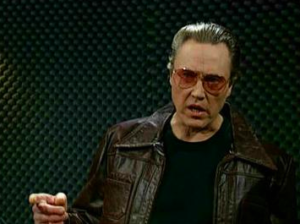
“I got a fever. And the only prescription is more cowbell!” – Christopher Walken (as Bruce Dickinson on SNL)
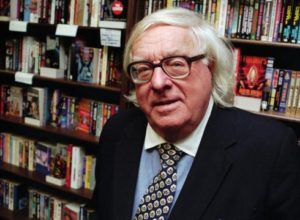
“The act of writing is, for me, like a fever — something I must do. And it seems I always have some new fever developing, some new love to follow and bring to life.” — Ray Bradbury.
Is writing for you a fever, a pastime, a hobby, a vocation, an obsession … or something else?
What are you doing to add more cowbell to your writing?
by James Scott Bell
@jamesscottbell
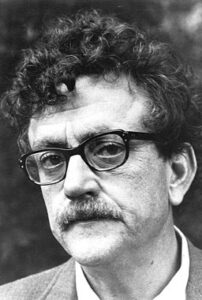
Kurt Vonnegut (Wikimedia Commons)
In the introduction to a collection of his short stories, Bagombo Snuff Box, Kurt Vonnegut tells a bit about his writing career. After several stories were published in magazines, and a couple of paperback novel sales, Vonnegut (with a growing family) ran out of dough. He thought about quitting. Then he was invited to teach creative writing at the famous Iowa Writers Workshop, which gave him the breathing space to write the novel that made him famous, Slaughterhouse-Five.
In that same intro Vonnegut gives eight rules he calls “Creative Writing 101.” Let’s have a look and ponder:
With the exception of #8, I mostly like these, ahem, suggestions.
#1 is an overall goal for all of us, isn’t it? I mean, people have too many tasks and not enough discretionary income as it is. They don’t want to feel like time invested in your book has not been worth it.
#2 is essential, even if the main character is negative, like Ebenezer Scrooge. Why do we root for Scrooge? We are hoping he’ll be redeemed.
#3 is a key to writing a good scene. The main characters in a scene should have agendas, and they should in some way be in conflict. Give your minor characters desires, too. That’ll add more spice.
#4. To this I would add that sentences can also establish mood.
#5 is a bit too amorphous. Vonnegut did not write long books. He was the Bizarro World James Michener. What do you think he meant by this?
#6 is essential. Plot and character are not separate matters. Plot (trouble) forces the revelation of true character. That’s why there is no such thing as a “character-driven” novel, unless that character drives off the road, and soon (even better if forced off the road by another driver!)
#7 is interesting. It’s true if you try to please everybody, you’ll be taken in too many directions to have an effective tale. But who is the “one person” Vonnegut is talking about? Some authors like to think of an “ideal reader.” Some authors say the one person is them: “I don’t care one whit about what anybody thinks. I write to please myself!” Personally, I always write to please myself, but I also give a nod to the market. You usually don’t make a lot of lettuce at this thing if you completely ignore the latter. The pulp writers all knew this. What is your approach?
Which brings us to #8. To heck with suspense? Come on! You can’t have page-turning readers without it. And if readers can finish the story themselves, that means it’s predictable, which also means boring.
Vonnegut was a comic novelist with bite. He wrote about ideas, wrapping them up in playful—even absurdist—guises. I don’t wonder then that he paid no heed to mystery and suspense. For the rest of us, though, I say, “Heed indeed!”
So what do you think of the Vonnegut Rules?
by James Scott Bell
@jamesscottbell
 Gather round for another of our first-page critiques. The genre is Mystery. My comments to follow.
Gather round for another of our first-page critiques. The genre is Mystery. My comments to follow.
A litter of russet leaves curled over the hood of the taxi as it pulled up to the curb. Chad had accepted a lift from the airport from Claude Durand, and now he was regretting it.
“I think it’s braveof you, to support Follett publicly,” Claude said.
Chad avoided eye contact. Was it brave to be honest? It shouldn’t be.
“Mind you, I wouldn’t stake your reputation on his. After what he did—”
“What he did? You mean what was done to him.”
Claude raised his palms. “Ecoutez-moi. I think you will find that many people at this tournament lost money when they invested in Chess Maestro.”
“An investment is always a risk.”
Claude surveyed him coolly. “You probably think you’ll be winning chess tournaments for the rest of your life.” With an extra tang of bitterness, he added, “Nice to be young.”
Outside the car window, the seaside hotel soared into the blue September sky. And on the front steps stood David Follett, with a fedora pushed back on his head and his chin raised.
“Well,” Chad said half-heartedly. “Thanks for the heads-up.”
Claude raised a palm again. “I’ve been studying your moves. You’ve got possibilities.” He put his hand on the door handle. “Don’t waste them.”
Chad left the car. He loved playing chess more than anything else in life. But he wasn’t always sure how he felt about other chess players.
“Good to see you, brother,” David said, crossing over to shake hands with him. “D’you have a good trip?”
“All but the lecture at the end.”
David grinned, showing the wrinkles around his eyes. “I’ll bet. But on a day like this, I feel magnanimous with the whole world. Even the Claude Durands. I think this is going to be a good tournament. You?”
“I’m feeling good.”
“That’s it, brother. Don’t let it all get to you. It’s just about the fun of the game.”
As Chad turned away, David placed a hand on his arm.
“Remember, the most dangerous game you’re playing is the one in your head.”
David Follett was always saying cryptic things like that. Chad never really understood what they were supposed to mean, but this time the words would come back to him with cruel significance before the day was done. David would be found floating face down in the hotel pool, his final game all played out.
***
JSB: Let’s start at the end. You hear it over and over: show, don’t tell. There’s good reason for that—it works. It’s the difference between an immediate, emotional experience (which is what a reader craves) and a dull lecture.
Yes, there are times to tell, but almost always that is in order to get from one scene to another quickly, so you can start showing again.
And for goodness’ sake, always show the most important, emotion-charged part of the scene in all its vividness.
Here, the most interesting thing that happens on the page is the body floating in the pool. But we’re only told about it. Worse, it hasn’t even happened yet, taking all the potential of emotional impact out of it when it does.
Dead bodies must be shown or reported in real time. (Unless they are part of a character’s backstory.)
So my first bit of advice for our writer is to cut something: the last paragraph.
Now let’s go to the beginning.
A litter of russet leaves curled over the hood of the taxi as it pulled up to the curb. Chad had accepted a lift from the airport from Claude Durand, and now he was regretting it.
That first line doesn’t give us a POV. It’s just there. Who is seeing these leaves?
Apparently Chad, according to the second line. Except the second line is written in the past tense, then switches to the present. This is confusing. Make a note of this: your opening page should always be present tense action through one POV. That will never, ever hurt you. Once you become world famous, you can mess around with style if you wish. But I wouldn’t advise it.
Oh yes, and avoid giving characters names that start with the same letter. It’s too easy to confuse Chad and Claude.
“I think it’s brave of you, to support Follett publicly,” Claude said.
I wouldn’t italicize “brave” in this instance. In fact, don’t italicize dialogue unless it’s necessary for emphasis, e.g., “I can’t believe you let him kiss you!”
Chad avoided eye contact. Was it brave to be honest? It shouldn’t be.
“Mind you, I wouldn’t stake your reputation on his. After what he did—”
“What he did? You mean what was done to him.”
You’re introducing a note of mystery here, which is a good move. And look! Italics might be called for, i.e., “What he did? You mean what was done to him.”
Claude raised his palms. “Ecoutez-moi. I think you will find that many people at this tournament lost money when they invested in Chess Maestro.”
I can’t think of a good reason to have Claude saying, Ecoutez-moi. Unless someone speaks French rather well, it just looks odd. I know it characterizes Claude as something of a continental sophisticate, but you can do that in other ways.
Claude surveyed him coolly. “You probably think you’ll be winning chess tournaments for the rest of your life.” With an extra tang of bitterness, he added, “Nice to be young.”
Okay, here is the first indication of who is who and what is what. Chad is a young chess master. Fine. But who is Claude? What is Claude’s relationship with Chad? Why should Chad listen to him?
Outside the car window, the seaside hotel soared into the blue September sky. And on the front steps stood David Follett, with a fedora pushed back on his head and his chin raised.
Again, that first sentence is passively objective. Put it in Chad’s head. Have him seeing the hotel. And by the way, where are we? Sounds like France, but this is where you can add specificity so the reader knows we’re at, say, the Soufflé Puant Hotel.
Chad left the car. He loved playing chess more than anything else in life. But he wasn’t always sure how he felt about other chess players.
Okay, here’s the heart of the matter. What’s missing in this scene is a character to bond with and a disturbance. Those are two crucial elements of any first page. The first question a reader has is, Who am I reading about? Whose story (or at least chapter) is this?
The second question is, Why should I care?
We’ve covered the first issue. Firmly establish we’re in Chad’s POV, and stay there. But further, what is there about him that we can empathize with? His love of chess might work, but the problem is you tell us he loves it. We need to feel him feeling it.
Here is where a bit of backstory can help. You’ll sometimes hear a critique-group sheriff announce in no uncertain terms, “No backstory in the first thirty pages!” This is not good advice.
There is fair warning about too much, however. So what’s the answer?
I’m here with JSB’s Backstory Prescription (JSBsBP). I’ve given this to students many times with wonderful results.
So here on the first page, give us some blood pumping in Chad about chess, such as:
Ever since he was seven, when his dad taught him the moves, Chad had been in love with chess. When he starting playing tournaments at age eight, the joys of victory deepened his love into a devotion bordering on obsession.
Now we’re starting to bond. What will cement that bond is a disturbance.
What trouble is there? Chad is arriving for a chess tournament of some sort. Claude tells him he’s being “brave.” You tell us he isn’t sure about some of the other chess players. David tells him not to “let it all get to you.” That’s not enough.
Give us something specific Chad can worry about.
Brainstorm. Come up with something that tells us it’s not smooth sailing arriving at this plush resort for a tournament.
Whew. I think I’ll stop here in order to make a suggestion. Try writing this first page in all dialogue. Not even attributions. This is for you only. Figure out how to put in all the crucial information we’ve talked about in a tense dialogue exchange between Chad and Claude. Include the disturbance in this exchange. (See my post on hiding information inside confrontation. See also P. J. Parrish’s Dos and Don’ts of a great first chapter.)
After that’s done, drop in two or three sentences of backstory, as prescribed earlier.
You’re going to love the result. As will potential readers.
And then—keep writing!
Good luck.
Comments welcome.
by James Scott Bell
@jamesscottbell
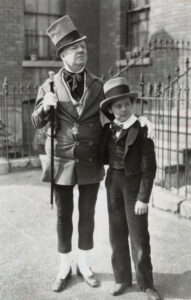
W. C. Fields as Wilkins Micawber; Freddy Bartholomew as David in MGM’s David Copperfield (1935)
When it comes to minor characters, what you don’t want is the bland leading the bland. That’s why I call minor characters “spice.” Just the right amount can turn an average reading experience into a tasty delight. It’s the difference between plain yogurt and Rocky Road, or chicken broth and mulligatawny.
Minor characters, as I use the term, are to be distinguished from Main and Secondary characters.
Main characters are Rick, Ilsa, Laszlo, Louis in Casablanca. They have the most to do with the plot.
Secondary are recurring characters who have some importance to the plot, like Major Strasser and Sam the piano man.
Minor characters are those who appear for various reasons to complicate or relieve matters (comic relief is a great tool in thrillers and suspense). In Casablanca there are a number of these, from Ugarte (Peter Lorre) to the desperate Bulgarian wife (Joy Page) to Carl the waiter (S. Z. “Cuddles” Sakall).
A subset of minor characters are those who appear once, necessary to a scene. Taxi drivers, doormen, barbers, and the like.
Consider now the uses of minor characters.
Essential Plot Information
There are any number of times when a main character needs some inside information. The cliché is the shoeshine guy who knows what’s happening on the street.
My favorite send-up of this trope is from the old TV show Police Squad, starring Leslie Nielsen as the cop. He gets into the shoeshine chair and slips Johnny a bill to tell him what’s what. The hilarious part is that while Johnny knows everything going on crime-wise, he also knows everything about everything. So when a priest sits down and asks, “What do you know about life after death?” Johnny answers, “I wouldn’t know anything about it.” The priest slips him a bill. Johnny says, “You talking existential being or anthropomorphic deity?”
It is Ugarte in Casablanca who delivers the MacGuffin to Rick—the letters of transit.
Deepening Main Characters
How a main character interacts with a minor character can reveal a great deal.
Here’s some advice from James “The Love Doctor” Bell. If you plan to get married, observe how your intended treats the server in a restaurant, or the checkout person at the grocery store.
What I call the “Pet the Dog” beat can be used for this. Think of Dr. Richard Kimble in The Fugitive (see my post here). He takes a risk to help a dying boy in the hospital, even though it leads to more trouble.
Or Rick, who helps the husband of the Bulgarian wife get the money they need to buy papers, instead of her having to sleep with Louis to get them. Louis observes this and makes note of it. More trouble for Rick.
Setting Richness
A minor character can lend color to an unfamiliar setting. This is a good addition to description. Seeing and hearing characters in their element adds to the tone and feel of a scene.
In the Harrison Ford movie Witness, John Book (Ford) is a cop who has to hide out among the Amish to avoid assassination and protect the Amish boy who can identify a murdering cop (played by Danny Glover). His interactions with various characters and their ways are evocative:
Scene Tension
Here’s an underused tip: put two minor characters in opposition in a scene as the main character is trying to advance the plot. In Long Lost I have two elderly women who volunteer at the reception desk of a local hospital. As my main character attempts to gain access, the two of them, dubbed Curls and Red by the main, snipe at each other, adding a further obstacle. I got this idea from my great aunts, one a widow and the other a divorcee, who lived together. When I’d visit, they’d put out the See’s candy and give each other little verbal jabs as they recalled family stories.
Plot Juice
Raymond Chandler famously said that if things get slow, just bring in a guy with a gun. Of course, it doesn’t have to be a guy or a gun, but a minor character with something of importance.
Hammett does this in The Maltese Falcon. Spade has had no luck finding the black bird. Then one night a man riddled with bullets stumbles into his office, hands him a bundle, and dies. Turns out the stiff is the captain of a ship and the bundle is, you guessed it, the falcon.
Wrapping Up a Mystery
Sometimes you get to the end of a book and there are plot threads that need to be accounted for (you pantsers know what I’m talking about!). Now what?
Well, a minor character can show up with the essential information. You can create such a character on the spot. But then you have to do something else—go back into the book and find a scene or two to plant this character. Otherwise, it will be a Deus ex machina.
I’ll leave you with a couple of tips for creating memorable minor characters.
Avoid stereotypes. They are usually the first picture to spring to mind because we’ve seen them so many times before. The bartender wiping a glass. The truck driver in boots and cowboy hat or baseball cap. Just take a moment to change things up. Maybe the bartender knits. Maybe the truck driver is a woman who likes dresses. You’re the writer, come up with something new.
Tags of manner and speech. Give each minor character one unique tag of manner and one of speech. Dickens was a master at this. Think of Uriah Heep, always rubbing his hands together and smarmily talking about how ’umble he is. Or Wilkins Micawber, who always uses twenty words when five would do. David describes him as—
a stoutish, middle-aged person, in a brown surtout and black tights and shoes, with no more hair upon his head (which was a large one, and very shining) than there is upon an egg, and with a very extensive face, which he turned full upon me. His clothes were shabby, but he had an imposing shirt-collar on. He carried a jaunty sort of a stick, with a large pair of rusty tassels to it; and a quizzing-glass hung outside his coat,—for ornament, I afterwards found, as he very seldom looked through it, and couldn’t see anything when he did.
That’s how you major in minors.
Who are some of you favorite fictional minor characters? How about in you own fiction?
by James Scott Bell
@jamesscottbell
 First thing I did when I decided to become a writer (even if I couldn’t learn like they told me in college, even if I failed) was go to a bookstore and buy a black coffee mug with WRITER on it. I wanted to look at it every day, and believe it. I don’t think I ever drank coffee from it. It’s still here in my office. I still look at it every day.
First thing I did when I decided to become a writer (even if I couldn’t learn like they told me in college, even if I failed) was go to a bookstore and buy a black coffee mug with WRITER on it. I wanted to look at it every day, and believe it. I don’t think I ever drank coffee from it. It’s still here in my office. I still look at it every day.
At first, when people would ask me, “So, what do you do?” I could never get myself to say, “I’m a writer.” I was still practicing law and running a small law book business. That’s really what I did to put food on the table.
Then I got published. Only when I had four or five books out there and a new multi-book contract was I comfortable enough to say “Writer.” Even then it took some getting used to.
That’s because the inevitable follow-up would be, “Oh! What do you write?”
“Fiction.”
“I love fiction. I wonder if I’ve read any of your books.”
I’d then be forced to give a few titles and watch the dead, uncomprehending eyes of my questioner blink, and see a half smile of abject pity crease her face.
Well, like the existentialists say, it is what it is. I’m better prepared now.
“What do you do?”
“I’m a writer.”
“Oh! What do you write?”
“Thrillers.”
“I love thrill—”
“Thanks! Here’s my card. You can check out my books on my website.”
So what about you? Do you feel comfortable calling yourself a writer?
Does there have to be a certain level of accomplishment first? (See Kay’s excellent reflections on “success.”)
Early on I clipped this from The Writer magazine. It’s by Malcolm Bradbury, from Unseen Letters: Irreverent Notes From a Literary Life:
I write everything. I write novels and short stories and plays and playlets, interspersed with novellas and two-hander sketches. I write histories and biographies and introductions to the difficulties of modern science and cook books and books about the Loch Ness monster and travel books, mostly about East Grinstead….I write children’s books and school textbooks and works of abstruse philosophy…and scholarly articles on the Etruscans and works of sociology and anthropology. I write articles for the women’s page and send in stories about the most unforgettable characters I have ever met to Reader’s Digest….I write romantic novels under a female pseudonym and detective stories…I write traffic signs and “this side up” instructions for cardboard boxes. I believe I am really a writer.
That’s how I felt at the beginning, though I quickly began to specialize in full-length thrillers. Even so, I love to write. Novels, novellas, novelettes, short stories, flash fiction, micro fiction. I’ve written a lot of nonfiction on the craft, starting with Writer’s Digest and moving from there to Writer’s Digest Books, to a spot on TKZ, and by publishing indie books on several aspects.
 And still I want to write more. There’s a kind of nonfiction piece that’s not easy to categorize, and as far as I know only two collections of such exist: Obituaries by William Saroyan, and Some People Are Dead by yours truly. You might call them Eclectic Musings, or Eccentric Escapades. But I’m calling them Whimsical Wanderings—Reflections From the Fringes of Normalcy. They are riffs that follow a random thought through a mind maze and into an unanticipated point.
And still I want to write more. There’s a kind of nonfiction piece that’s not easy to categorize, and as far as I know only two collections of such exist: Obituaries by William Saroyan, and Some People Are Dead by yours truly. You might call them Eclectic Musings, or Eccentric Escapades. But I’m calling them Whimsical Wanderings—Reflections From the Fringes of Normalcy. They are riffs that follow a random thought through a mind maze and into an unanticipated point.
You will find this on my Substack, and I’d like to invite you to join. Just type in your email and you’ll get it spam and ad free. For a paid subscription there’s extra content and a podcast, too. (Yes, podcast. Gilstrap isn’t the only one around here with a mellifluous voice!)
The purpose of all this is to provide a lift in the middle of your week, an oasis away from all the ranting and raving and name calling and general hooting.
So yes, I finally believe I am a writer.
Comments welcome.
by James Scott Bell
@jamesscottbell
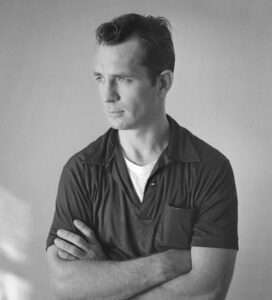
Jack Kerouac
Every college boy who wanted to be a writer back in the day when I trod the quad of my institute of higher education, went through a Jack Kerouac phase. This usually followed a Hemingway phase. In my case, I went through both simultaneously, which will blow your mind, man.
Hemingway, master of lean prose; and Kerouac, who spilled words on paper like Pollock tossed paint on canvas. Both authors had the added attraction of a personal brand—Hemingway, the man’s man, running with the bulls; and Kerouac, the “angel-headed hipster” driving freely across America in search of beatitude, with a jazz soundtrack.
Kerouac (1922-1969) was dubbed the bard of the Beat Generation for his novel, On the Road (1957). He famously typed it on a 120-foot-long scroll of paper so he wouldn’t have to stop his flying fingers. In three weeks, fueled by Benzedrine and coffee, Kerouac produced the first draft of the book that made him famous. I do not recommend this method.
A second novel, The Dharma Bums (1958) cemented his reputation.
After that, in the humble opinion of your scribe, his prose became increasingly unreadable. No doubt his drinking had something to do with it—booze killed him at the age of 47.
He once typed out his writing advice, and from the looks of it he was, perhaps, stimulated. Fasten your seatbelt:
Okay, pause to catch breath. Yes, Kerouac was a “wild” “crazy dumbsaint” writer. Because of that, some of the prose in On the Road is exquisite. Like this oft quoted passage:
…and I shambled after as usual as I’ve been doing all my life after people who interest me, because the only people for me are the mad ones, the ones who are mad to live, mad to talk, mad to be saved, desirous of everything at the same time, the ones who never yawn or say a commonplace thing, but burn, burn, burn like fabulous yellow roman candles exploding like spiders across the stars and in the middle you see the blue centerlight pop and everybody goes “Awww!”
But I can’t let #5 go without comment. The form of his later books seems to me to get increasingly messy (experimental) like the floor of a VW microbus driven across country by the Merry Pranksters. I think his “spontaneous prose” worked best in On the Road and The Dharma Bums because those already had a structure—they are really autobiography with the names changed, and much of the material was already in Kerouac’s journals. He was recording his experiences, not making up fiction.
This all reads more like a window into Kerouac’s writer-mind than, say, an outline for a writing workshop. But there is one takeaway I might recommend.
I think the pursuit of writing gems, of style that elevates certain moments in your novel, is worth it. Maybe now more than ever what with AI cranking out colorless, soulless prose. Want to stand out in the tsunami of AI-generated cr*p? This is one way to do it.
What I do when I come to a moment of intense emotion is start a fresh document and begin “wild…pure…typewritten pages” telling “the true story of the world in interior monolog.” I type without “literary grammatical and syntactical inhibitions” to get to “bottomless from bottom of the mind.” I stay “submissive to everything, open, listening.”
When I’m done I’ll have 250 – 500 words of be-bop prose rhapsody, “swimming in language sea.” From that I can select, rearrange, tweak, and choose the best parts. Maybe even just one sentence, but that sentence will be choice.
So did any of these “tips” resonate with you? Blow as deep as you want to blow.